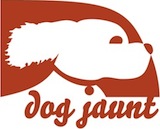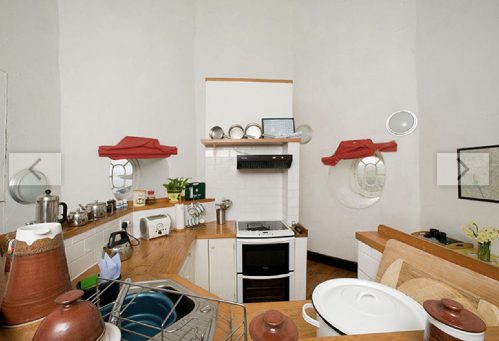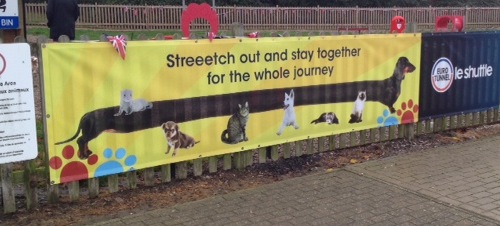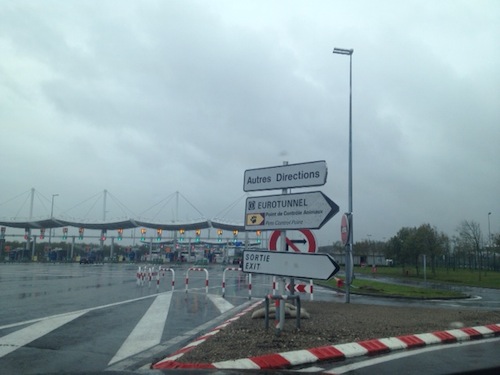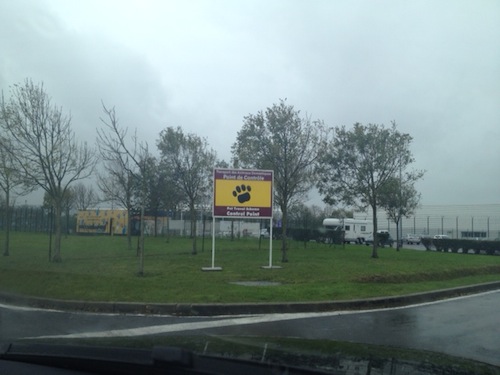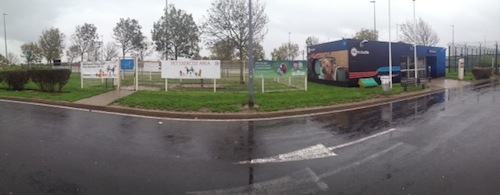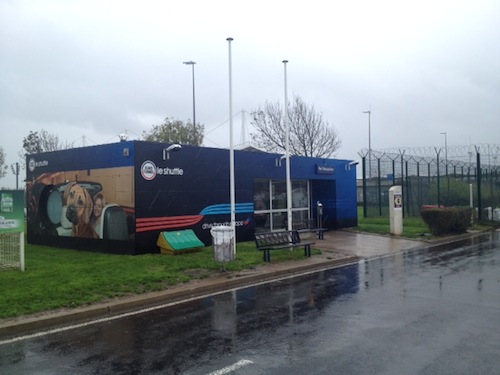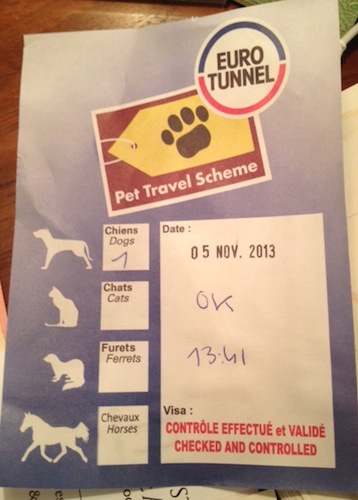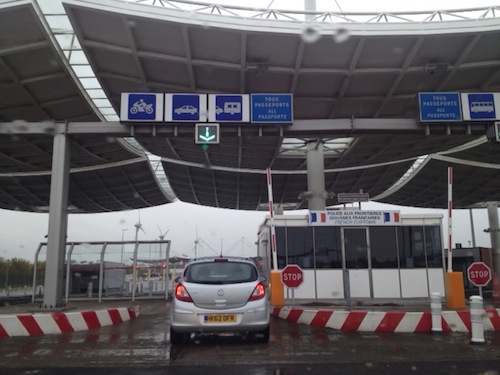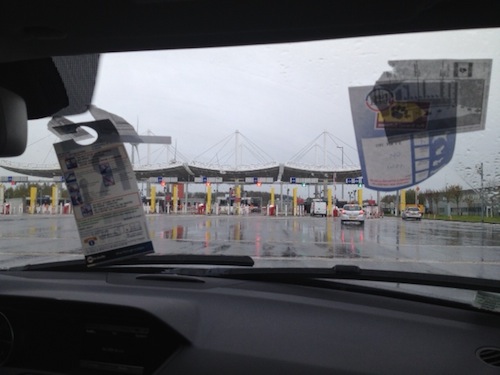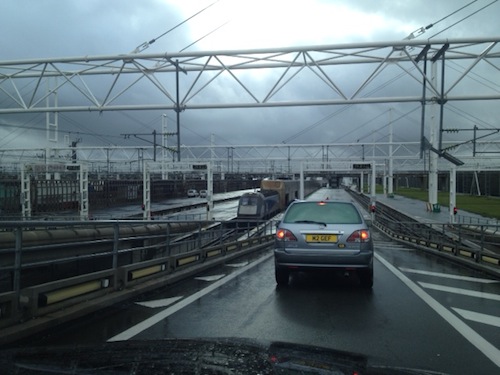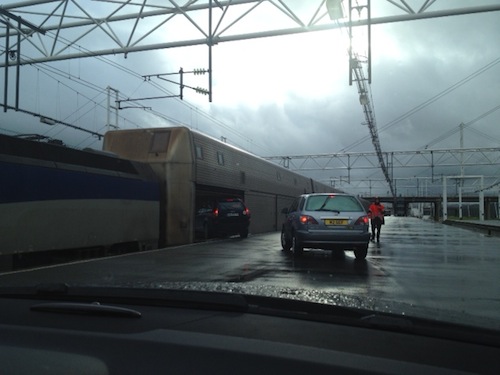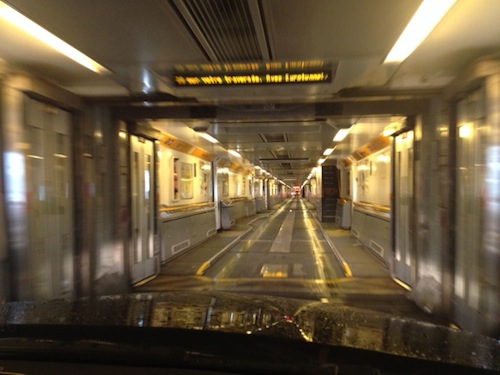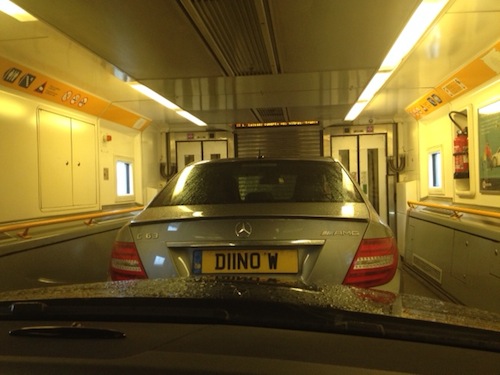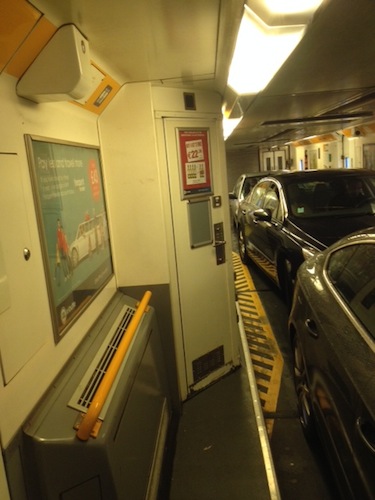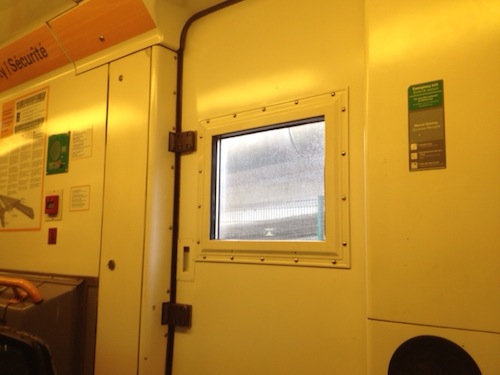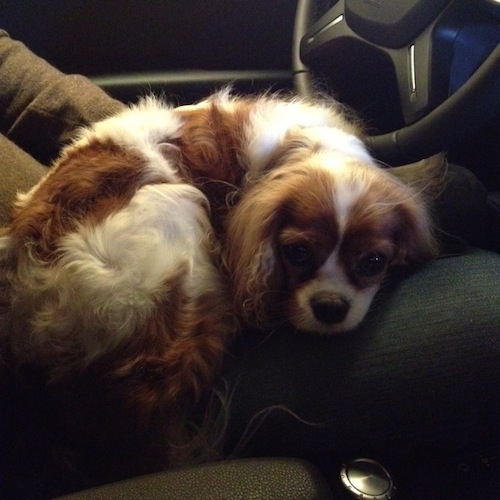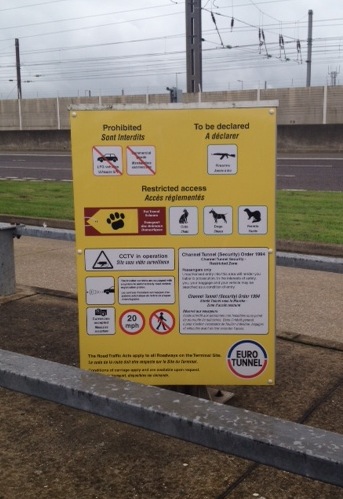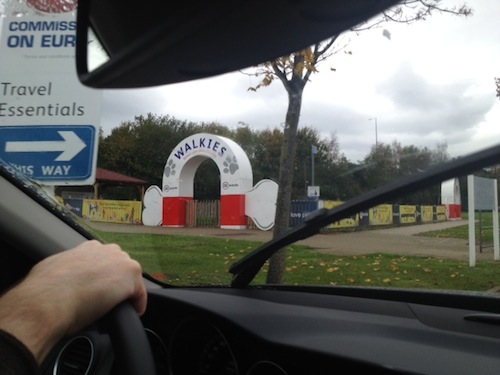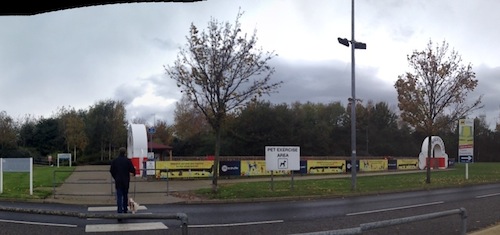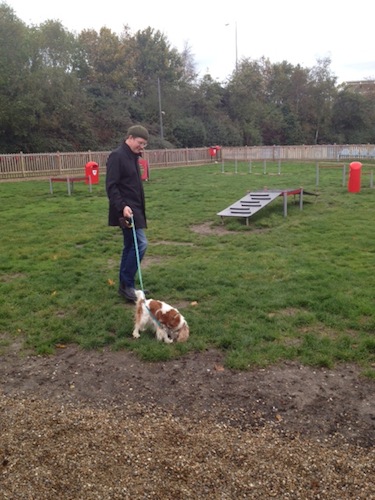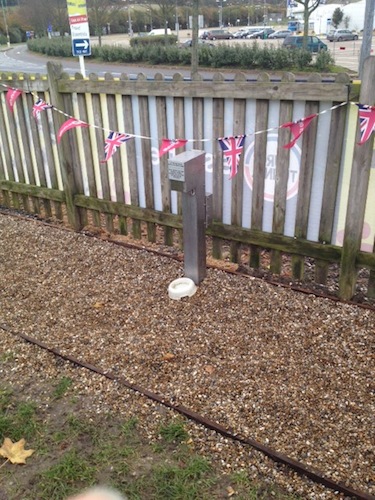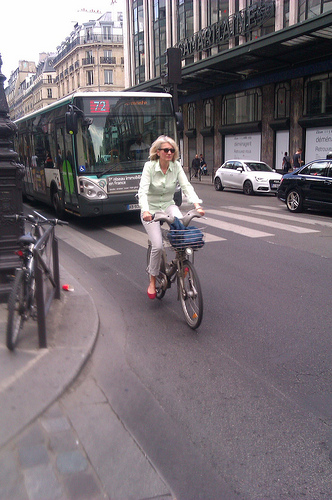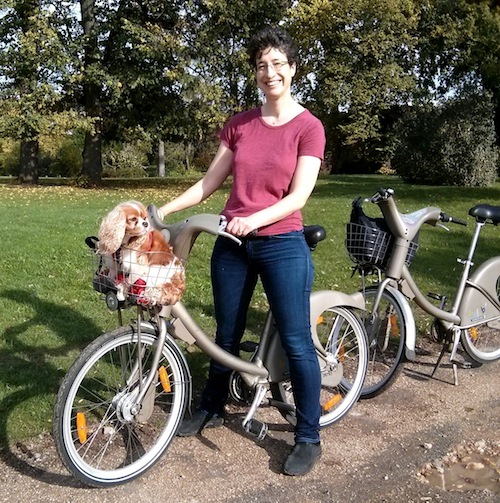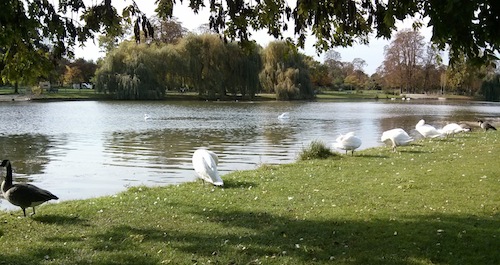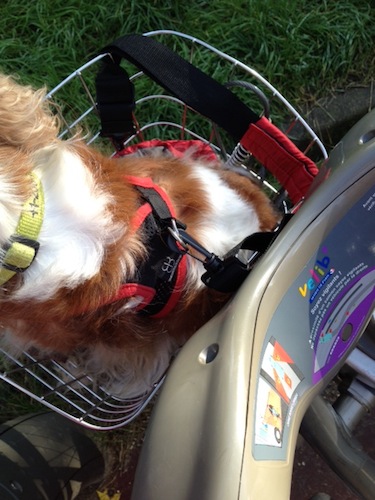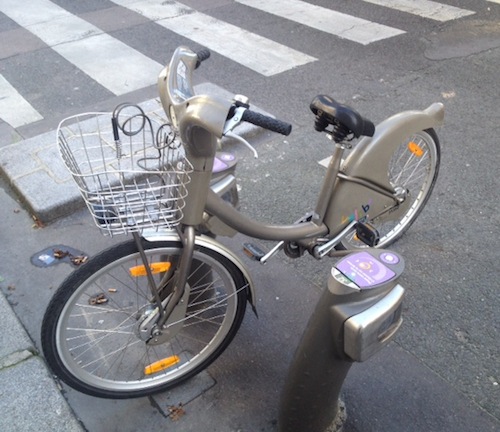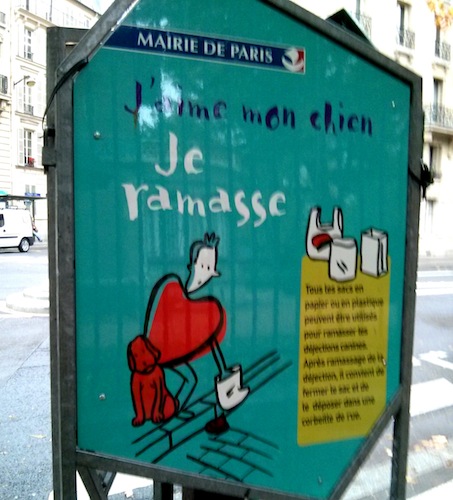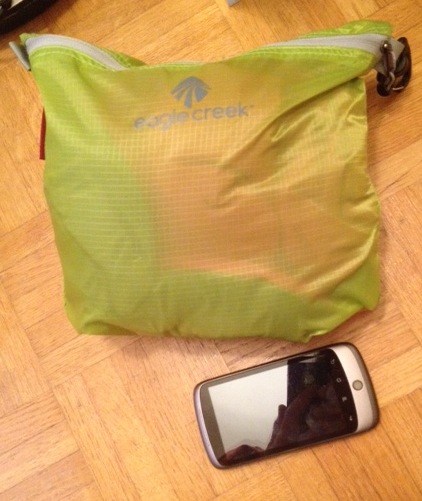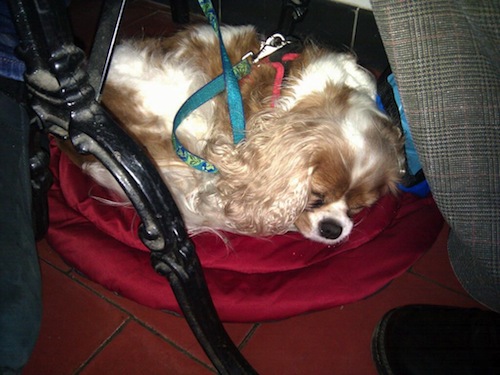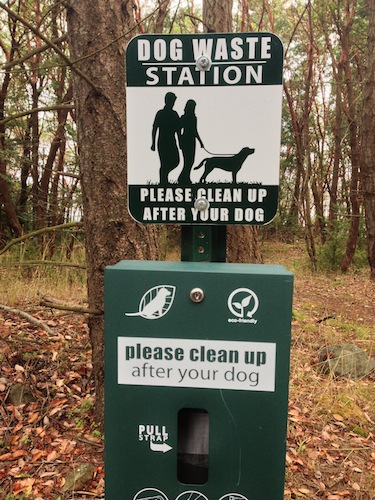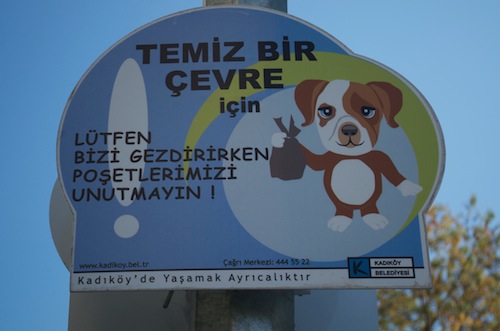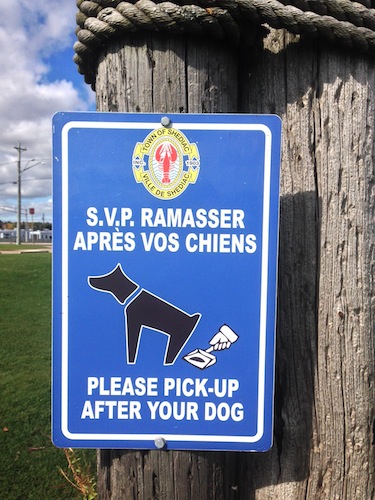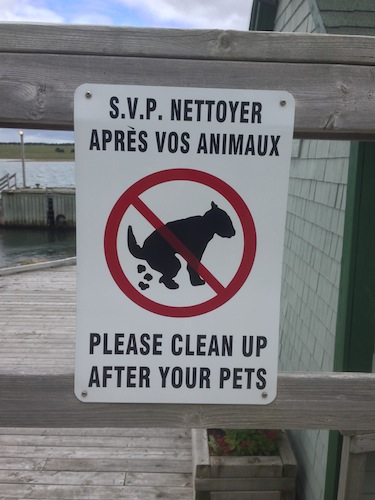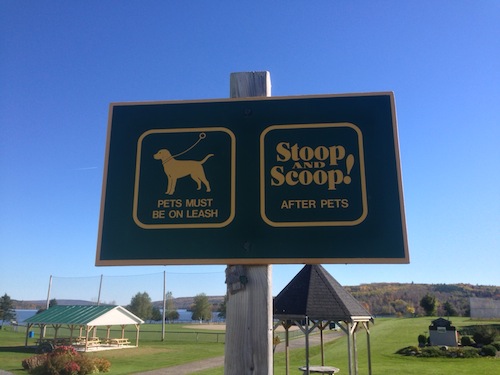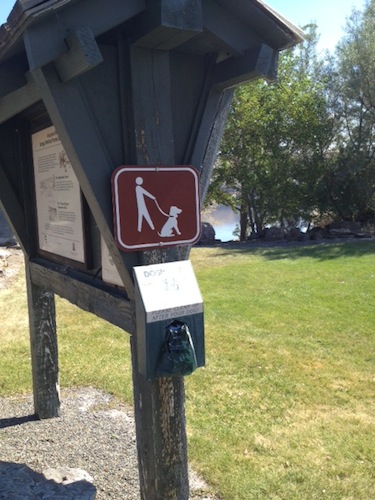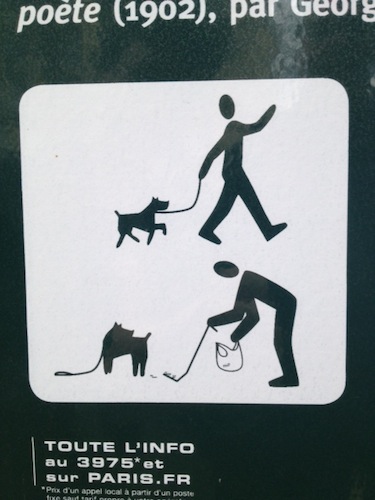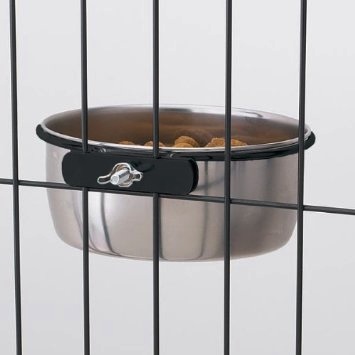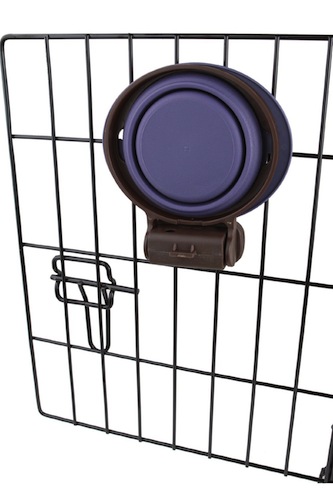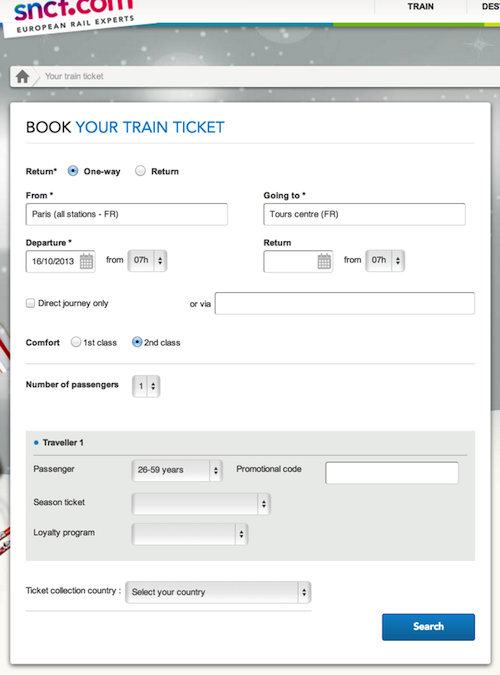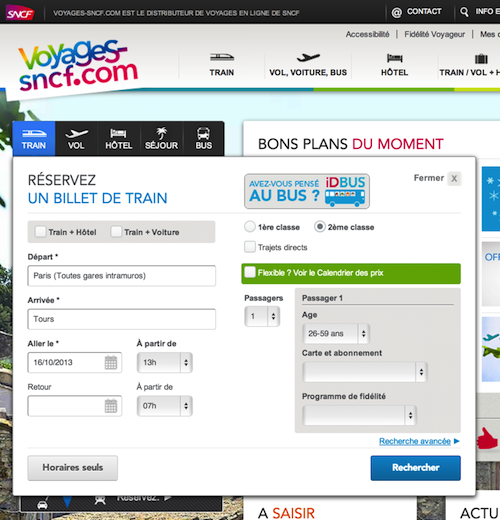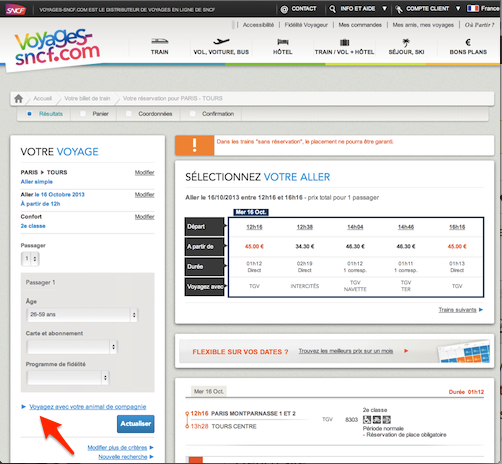Just over a month ago, I posted a list of all the châteaux in the Loire Valley and provided what information I could gather about their pet policies. But what if you’re headed to Germany or the Czech Republic instead? Reader Hazel posted a message on Dog Jaunt’s Facebook page asking if anyone knew whether pet dogs are welcome at the castles that line “Castle Road” (or “Burgenstraße,” in German). I didn’t, but I had wonderful memories of castle-hopping in Germany with my parents when I was a child, so I threw myself happily into the new project.
A quick overview: Castle Road stretches for over 600 miles from Bavaria to Prague. Dozens of castles, palaces, gardens, and villages line its path, and you could easily structure all or part of a vacation around visiting them. For many decades, the route ended at Germany’s eastern border, but in the 1990’s it was extended into the Czech Republic (oddly, there does not seem to be a Czech name for Castle Road/Burgenstraße).
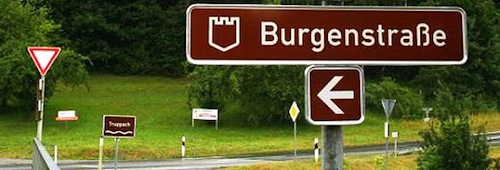
The route is well-signed, and makes for a great road trip
The official site of Castle Road has been a tremendous help, providing useful maps, information and links. I’m particularly grateful for its directional (west-to-east and east-to-west) lists of sites to visit, and have chosen to list the castles below in west-to-east order.
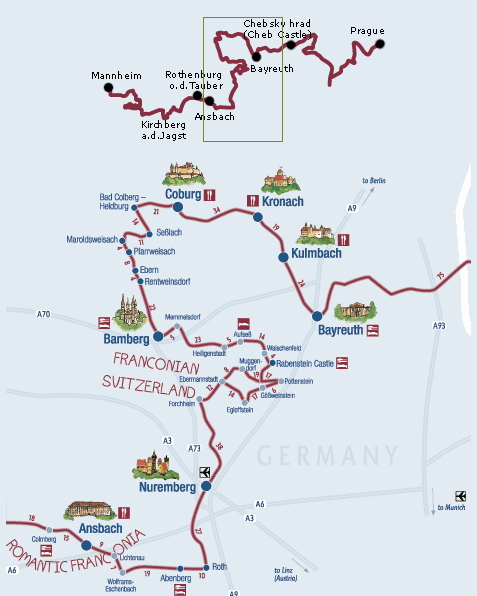
The central segment of Castle Road (the smaller red-line image is an overview of the entire trail)
In my list, the name of each castle is usually a link to the official site’s info about it; sometimes, however, it’s a link to its own site. I’ve often provided links to the German version of a site, since it’s not uncommon for the English version to have less information than the original. I know about 15 German words, myself; Google Translate has been my dear, dear friend for the past few days.
As you’ll see, the list starts out well, since the Staatliche Schlösser und Gärten (Baden-Württemberg) does a magnificent job of organizing and presenting visitor information. Heading eastwards, info becomes increasingly sketchy. If you visit any of these properties, please let me know what you learn about their pet policies — that’ll help keep the post current and useful.
And please note, too, that this is the kind of info that tends to change without notice, so be sure to follow up yourselves before committing to nearby hotel reservations, etc.
Germany
Barockschloss Mannheim — The palace is under the umbrella of the Staatliche Schlösser und Gärten (Baden-Württemberg), which generally does not permit pet dogs in its buildings. They are allowed, leashed, in the gardens, however. Here’s the link and text: “In den Gebäuden der Staatlichen Schlösser und Gärten Baden-Württemberg herrscht ein allgemeines Hundeverbot. Eine Ausnahme besteht für Blindenhunde. In den Gärten sind Hunde angeleint zugelassen.” Mannheim Palace hews the line; pet dogs are not allowed inside (“In den Räumen des Barockschlosses Mannheim herrscht ein allgemeines Hundeverbot.”).
Schloss und Schlossgarten Schwetzingen — Pet dogs allowed, leashed, in the gardens, but not in the castle (link here).
Schloss Heidelberg — Pet dogs allowed, leashed, in the gardens, but not in the castle (link here).
Burgfeste Dilsberg (Neckargemünd) — Leashed dogs are allowed in the fortress building (link here).
Neckarsteinach — Town below four castles (Schadeck, Hinterburg, Mittelburg, and Vorderburg, the first three of which have parts that can be visited). I wasn’t able to learn whether pet dogs can accompany you to the castles, but the kinds of activities you can do there (climbing the curtain wall, viewing the ruins, viewing the bailey, walking up the tower) sound pet-friendly.
Burg Hirschhorn — The castle is now a hotel and restaurant. According to this site, it’s dog-friendly.
Burg Eberbach — It sounds like you can leap around the ruins, from which there’s a good view. No info provided about pets; surely your leashed dog can accompany you.
Burg Hornberg — The castle is now a hotel and restaurant. I’ve sent the hotel a query about their pet policy, and will update when they respond.
Burg Guttenberg — Pet dogs are not allowed inside the castle or, generally, in the falconry center, but they are allowed in the grounds (per the website, “Hunde dürfen leider nicht mit in die Anlage der Deutschen Greifenwarte oder ins Burgmuseum. Auf dem sonstigen Burggelände dürfen sie natürlich ihr Herrchen begleiten.”). At certain times of year, apparently, visitors with pet dogs can see the raptors in action (link here).
Schloss Heinsheim — The castle is now a hotel and restaurant. The hotel is pet-friendly (no extra charge).
Burg Steinsberg — It sounds like you can visit the ruins, from which there’s a good view. No info provided about pets; surely your leashed dog can accompany you.
Schloss Öhringen — The castle now houses city administrative offices; you can look around at rooms that aren’t being used. No info provided about pets.
Schloss Neuenstein — The castle is now a museum and archives. No info provided about pets.
Schloss Waldenburg — Privately owned.
Kloster Großcomburg — Not currently open because of structural issues.
Schloss Kirchberg — May be visited by appointment (call 07954/802-0). No info provided about pets.
Burg Rothenburg — A gate tower survived the 14th c. collapse of the castle, and there is a lovely garden (and view). No info provided about pets.
Ansbach (Residenz der Markgrafen von Ansbach, and Hofgarten Ansbach) — No info provided about pets.
Burg Colmberg — The castle is now a hotel and restaurant. According to this site, it’s dog-friendly. The interior of the Veste Lichtenau, another important building in the area, can only be visited by prior appointment; the Deutschordensschloss Wolframs-Eschenbach now houses city administration offices — step in and ask for tourist information, and you’ll have a chance to check it out.
Burg Abenberg — The castle now houses a museum and a hotel/restaurant. According to this site, the hotel is dog-friendly.
Schloss Ratibor — The castle now houses a museum, library and archives, and city offices. No info provided about pets. Again, I’d pay a visit to the tourist information office to get a glimpse of the interior.
Kaiserburg Nürnberg — With a name like that, you know it’s got to be especially good. Per a late 2012 review on TripAdvisor, pet dogs are not allowed inside. No info provided about whether they’re allowed in the grounds.
Fränkische Schweiz — Of the many appealing properties in this area, the most likely to be dog-friendly (to some extent) are the ruins of Burg Streitberg (another great view); and the gardens of the Burg Pottenstein and the Schloss Seehof. There may be pet-friendly guest rooms in the Schloss Aufsess (the Schloss Oberaufsess also accepts guests, and the resident family has a dog; perhaps that means they’ll look kindly on your pup). From my phrasing, you can tell that info about pet dogs is not provided for any of these properties.
Bamberg — While it seems unlikely that pet dogs are allowed in the Neue Residenz, they might be allowed, leashed in the Rosengarten. Similarly, I hope pet dogs are allowed at least in the grounds of Altenburg, but no information is provided. (How I wish the rest of Germany would adopt the orderly ways of Baden-Württemberg!)
Schloss Rentweinsdorf — Privately owned.
Schloss Eyrichshof — Privately owned.
Coburg — Home of several magnificent castles (Schloss Callenberg, Schloss Ehrenburg, Schloss Rosenau, and Veste Coburg), not one of which mentions its pet policy. I hope that pet dogs are at least allowed in the park of Schloss Rosenau, but I can’t find a scrap of info on the topic.
Festung Rosenberg — The castle now houses a museum. My guess is that pet dogs are not allowed inside; no info provided about whether pets are allowed in the grounds.
Plassenburg — The castle now houses several museums. No info provided about pets.
Bayreuth – The Neues Schloss, the Eremitage, and the Sanspareil rock garden are major attractions. The only bit of information I could find about pet dogs comes from the rules for the Neues Schloss’s gardens, and indicates that leashed dogs are allowed: “Tiere (insb. Hunde) müssen an einer höchstens 120 cm langen reißfesten Leine mitgeführt warden. Die Person, die ein Tier mitführt, muss jederzeit in der Lage sein, das Tier körperlich zu beherrschen.” (Section 3)
Czech Republic
Burg Eger/Hrad Cheb — Pet dogs are not allowed in the museum/exhibition area, but leashed dogs appear to be allowed in the grounds: “das freie Herumlaufen von Hunden und anderen Tieren im Objekt und auf seinem Gelände ist verboten, ihr Zugang in die Ausstellungen ist untersagt” (link here).
Schloss Sokolov — The castle now houses a museum and library. No info provided about pets.
Burg Elbogen/Hrad Loket — Per an icon on the castle’s home page, pet dogs are not allowed.
Burg und Schloss Petschau/Hrad a Zámek Bečov — The castle appears to be under restoration, and not yet open to visitors.
Schloss Königswart/Zámek Kynžvart — The castle’s website makes no mention of pet dogs.
Prämonstratenser Kloster Teplá/Klášter Premonstrátů Teplá — The monastery’s website does not mention pet dogs.
Wasserburg Schwihau/Vodní hrad Švihov — I cannot tell from the website whether pet dogs are allowed; I am passionately fond of moated castles, though, so I’d certainly visit and inquire in person.
Schloss Nebillau/Zámek Nebílovy (Nezvěstice) — Barely any info about the castle, and none about pet dogs. Alas!
Schloss Kozel/Zámek Kozel (Štáhlavy) — The castle’s website includes a list of signs you’ll see, including one that prohibits dogs — but since the list also includes a general “no entry” sign and a “no photography” sign, it could just mean that dogs are not allowed in the castle.
Schloss Horschowitz/Zámek Hořovice — Not a sausage about pet dogs in the castle’s website.
Burg Bettlern/Hrad Žebrác and Burg Totschnik/Hrad Točník (Zdice) — Hrad Žebrác is in ruins (surely you can visit a ruined castle with a pet dog?); Hrad Točník can be viewed by guided tour. The local website is mum about pet dogs.
Burg Pürglitz/Hrad Křivoklát — No mention in the website of pet dogs.
Burg Karlstein/Hrad Karlštejn — Pet dogs are not allowed.
Prague Castle and its gardens — Pet dogs are not allowed [PDF] in “the buildings and gardens.”
